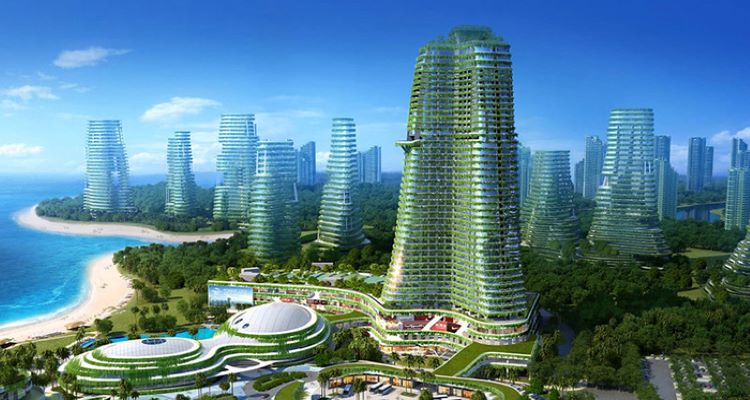Guanie Lim
Guanie Lim

Visualisation of Forest City in Malaysia
It has been slightly more than 9 years since the Belt and Road Initiative (BRI) was announced by Chinese President Xi Jinping. Widely seen as China’s foremost diplomatic and economic strategy in engaging with the external world, just how much has this belief materialized? More importantly, how has the initiative been received by the host economies? First and foremost, there is a need to qualify what constitutes as ‘influence’ and/or ‘impact’. One way of approximating this is in the analysis of Chinese foreign direct investment (FDI) vis-à-vis those of the other Global North economies. In Southeast Asia, China’s ‘near abroad’, recent research demonstrates that Chinese FDI is considerably ‘smaller’ than what popular rhetoric suggests (Lim, 2019). Firstly, Chinese outward FDI, while increasing in value, is not more significant than the region’s traditional investors such as Japan and the EU. If anything, its rate of increase exhibits a considerably choppier trajectory than those of the traditional investors. This implies that there remains some stumbling block before China can usurp the region’s pre-existing political economic order.
Relatedly, unlike the traditional investors which mainly invest in manufacturing industries, FDI from China has been primarily channelled towards tertiary industries such as real estate. Although these activities also contribute to economic output, they tend to be narrowly focused on industries that have relatively lower multiplier effects on the host economies. Take real estate for example, it often contains a significant element of speculation, lopsided distribution of economic gains, and a lack of sustained local employment. This potentially creates more losers than winners in the recipient economies, not least those already suffering from high levels of inequality and social discontent. This was witnessed in the Forest City project in southern Malaysia. This project – encompassing four manmade islands sprawled over 1,386 ha of land – is one of the largest Chinese projects in Malaysia. However, the project’s exorbitant cost and enclaved nature has drawn the ire of politicians who allege that its fruition is harmful to national development. Subsequent politicizing has further diminished Forest City’s appeal in the eyes of the business community, contributing to a massive slowdown in its development (Liu and Lim, 2019).
Secondly, massive, ambitious BRI undertakings cannot be decoupled from local level agency. This goes back to on the ground reality – projects cannot take place if there is insufficient support from host level stakeholders. Analysing some of the most prominent Chinese-financed railway projects in Southeast Asia, Camba (2020) argues that their fruition is crucially dependent on the formation of a coalition that amalgamates political, economic, and organizational resources from the relevant actors, both from within and outside the host economies. More importantly, such a coalition is subject to change and could be fractured when domestic dissenting forces reach a critical mass. When this happens, the projects are likely to face delays (or worse, downright cancellation) (see also Calabrese and Cao, 2021). The need to unpack the goals and machinations of the domestic elites – at the central and subnational levels – is also underlined in research covering the Sino-Thai railway interlinking Bangkok and Thailand’s rural, north-eastern provinces (Aiyara, 2019). The project was promoted especially by the Yingluck Shinawatra administration (2011–2014) because the railway route traversed major vote banks in Thailand’s northeast, its traditional stronghold. In addition to promising the voters higher economic growth and a more convenient transportation means, the administration also signalled to the provincial politicians and business elites that they too stand to gain from higher land prices and rents when the project is completed. This railway, despite allegations of pork barrel politics, has remained a priority for successive post-Yingluck administrations.
The overarching thesis here is that there needs to be a concerted attempt to go beyond large-scale geopolitical narratives that depict the BRI under sweeping, uncritical themes. Observing how the initiative has unravelled in Southeast Asia thus far, it can be argued that seemingly small states have captured economic benefits while preserving some level of independence in the face of gigantic BRI projects. By the same token, there is insufficient evidence to suggest that FDI from China is overtaking those of the region’s traditional players. The agenda, as we move forward in the 2020s, is how best to explore in more nuanced terms the BRI’s intertwining with the local political economy.
References
Aiyara, T (2019). The Long and Winding Railway: Domestic Politics and the Realization of China-Initiated High-Speed Railway Projects in Thailand. Chinese Political Science Review 4: 327-348.
Calabrese, L and Cao, Y (2021). Managing the Belt and Road: Agency and Development in Cambodia and Myanmar. World Development 141: 105297.
Camba, A (2020). Derailing Development: China’s Railway Projects and Financing Coalitions in Indonesia, Malaysia, and the Philippines. Boston: Global Development Policy Centre.
Lim, G (2019). China's Investment in ASEAN: Paradigm Shift or Hot Air? GRIPS Discussion Papers 19(04): 1-17.
Liu, H and Lim, G (2019). The Political Economy of a Rising China in Southeast Asia: Malaysia's Response to the Belt and Road Initiative. Journal of Contemporary China 28(116): 216-231. Guanie Lim is Assistant Professor at the National Graduate Institute for Policy Studies (GRIPS), Japan.
Guanie Lim is Assistant Professor at the National Graduate Institute for Policy Studies (GRIPS), Japan.


